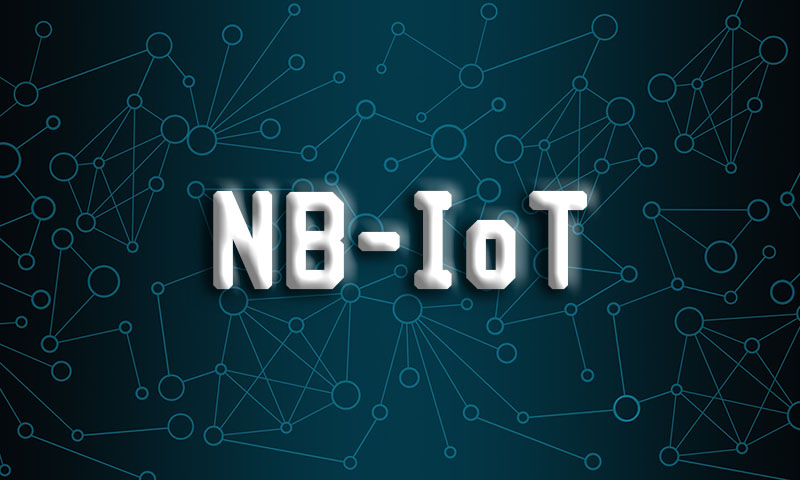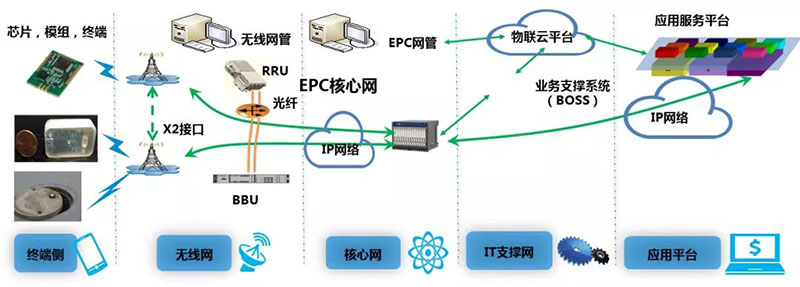In recent years, with the saturation of everyone’s phone calls and the penetration of things-things connections in various industries, the Internet of Things has become a product of the development of the times, and the Internet of Things business will also show large-scale growth. According to IDC’s forecast, by 2020, the total number of global IoT connections will reach 30 billion, and the market size will reach 1.7 trillion US dollars.


As one of many LPWA technologies, NB-IoT technology stands out due to its low power consumption, wide coverage, and large connections. It has great potential especially in the fields of smart meter reading, smart street lights, gas meter reading, and smart manhole covers. The development space will further promote the rapid development of intelligent transportation, smart home, smart medical and smart logistics industries in the future.
As an important branch of the Internet of Things, NB-IoT has become the focus of the industry. This article first analyzes the development situation and technical characteristics of NB-IoT, and then explains the specific application solutions of various frequency deployment methods of NB-IoT from the perspective of network deployment. Combined with the actual situation of domestic operators’ 2G/3G/4G networks, Proposed NB-IoT network deployment plans and suggestions based on the existing network.
NB-IoT industry development status
In order to take advantage of the strategic opportunities before the explosion of the Internet of Things industry, the three major domestic operators are actively promoting the construction of NB-IoT networks. China Telecom has started the LTE re-cultivation of the 800M frequency band to support the NB-IoT network; China Unicom Actively deploy innovative Internet of Things services based on NB-IoT technology, deploying NB-IoT with 900Hz/1800MHz dual frequency; although China Mobile currently obtained an FDD license in April 2018, it is limited to use in rural areas at and below the county level , its deployment progress is temporarily lagging behind the other two operators. Currently, the first phase of the NB-IoT network construction has covered 346 cities. By the end of 2018, the NB-IoT network will achieve county-level coverage. The basic strategy will be to coordinate the deployment progress of FDD-LTE and NB-IoT and actively lay out the eMTC network.
NB-IoT deployment scenarios and networking
According to the provisions of RP-151621 in the NB-IoT project, NB-IoT supports three deployment scenarios, namely: independent deployment (stand-alone mode), guard-band deployment (Guard-band mode), and in-band deployment (In-band mode). ).
1) Independent deployment: It mainly uses idle spectrum of the existing network or new spectrum to deploy NB-IoT, with a frequency bandwidth of 200kHz. Suitable for GSM and CDMA frequency band re-farming. This method has relatively flexible capacity scalability, independent high transmit power, and relatively high downlink rate.
2) Guard band deployment: Mainly reflected in the guard band at the edge of NB-IoT working in the LTE system. This method is more difficult to expand capacity and also reduces the signal-to-noise ratio of LTE.
3) In-band deployment: The main advantage is that capacity expansion is very flexible and the transmission power is high, but it affects the LTE network capacity and also limits network coverage. Because this method can occupy one Rb of bandwidth in the LTE band to deploy NB-IoT. In this way, frequency interference will exist if the frequency bands of the two systems are adjacent. To avoid this interference phenomenon, the transmit power of NB-IoT technology should be 6dB lower than the LTE power spectral density.
The NB-IoT network is mainly divided into five parts: NB-IoT terminal, NB-IoT base station, NB-IoT core network, IoT cloud platform and application service center.


1) NB-IoT terminal: supports access to IoT devices in various industries;
2) NB-IoT base station: mainly refers to LTE base station;
3) NB-IoT core network: the connection hub between NB-IoT base stations and NB-IoT cloud;
4) IoT cloud platform: the center for processing and feedback of various businesses;
5) Application Service Center: It can not only obtain the NB-IoT business data of this center, but also complete the control of NB-IoT terminals.
NB-IoT typical application scenarios
At present, NB-IoT has been increasingly widely used in many fields such as public utilities, smart cities, and industrial applications. The application of the Internet of Things will cover seven major categories, the specific contents are as follows.
1) Public utilities: meter category, mainly including smart water meters and smart gas meters.
2) Smart city: smart parking, smart trash cans, smart light poles.
3) Smart building: alarm system, heating, ventilation and air conditioning system, access system.
4) Agriculture and environment: including agriculture, forestry, animal husbandry and fishery, livestock monitoring, and environmental monitoring.
5) Consumption and medical care: household appliances, pet/child tracking, shared bicycles, remote clinical tracking.
6) Industrial applications: industrial equipment status monitoring, process and safety monitoring, energy infrastructure.
7) Logistics support: industrial assets, container tracking, location and status updates.
As NB-IoT technology continues to penetrate all walks of life and the ecosystem gradually improves, its impact on social development will become increasingly obvious.
